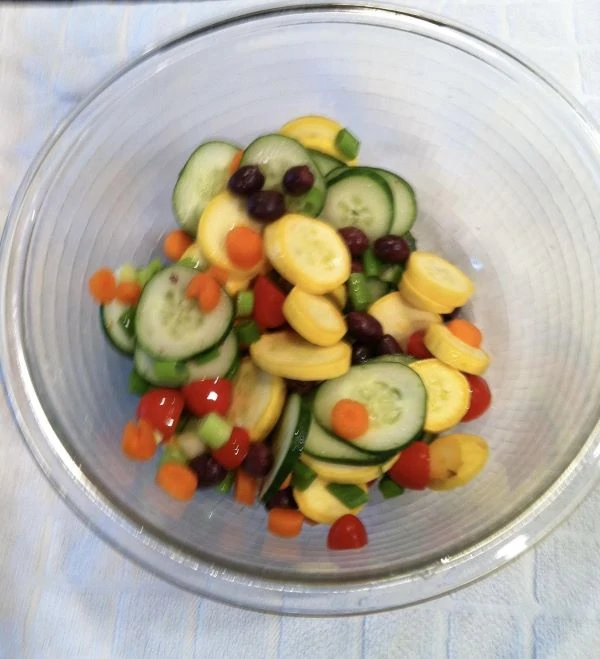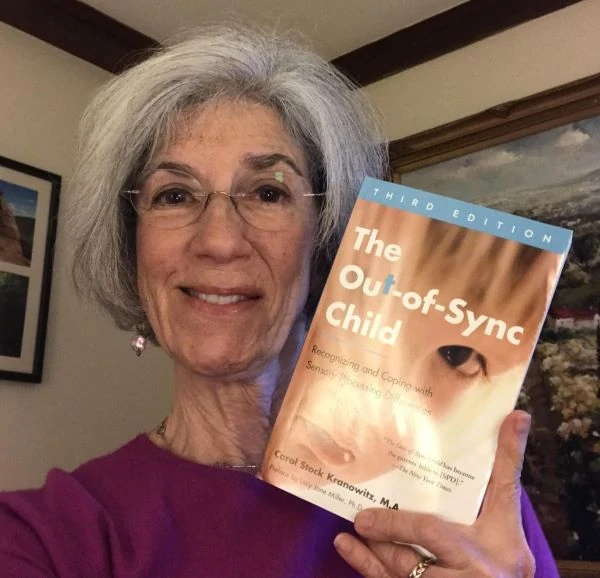An advertisement from an electric power company dropped through my mail slot today, shouting,
BLACKOUT: Could It Happen Again?
It got me thinking about survival skills. When an outage occurs and we can’t switch on the electric power, we must switch to our own people power to get from place to place, prepare meals, communicate with others, and entertain ourselves.
Will we be prepared? Especially those among us with sensory processing differences (SPD) and other physical challenges?
Alas, so much is done for us these days that we all are becoming “do-ees” instead of “do-ers.” Learned helplessness is everybody’s problem.
Consider automatic doors, electric can openers, battery-operated pencil sharpeners and toothbrushes, Velcro fasteners, electronic keyboards, TV remotes, pre-sliced vegetables, and public restrooms’ sensor faucets. (Who’s the sensor? Not us!)
These “smart” things are designed to make life easier and cleaner today — but they deny children opportunities to develop skills they will need tomorrow. Kids need steady practice using their sensory systems and engaging their bodies to push, pull, squeeze, rotate, twist, tie, zip, write, slice, chop, and perform other everyday actions.
How smart is a device that renders us senseless?
Let’s not allow devices to extinguish our senses! For everyday life, we need our eight sensory systems to be working in synchrony.
(To refresh your memory, in addition to the five senses of touch, sound, sight, smell, and taste, we have three others. Proprioception tells us about our muscles and joints; the vestibular sense, about our balance and movement; and interoception, about our internal organs.)
We need our senses, first, for survival. We must be poised to satisfy physical demands like hunger and to protect ourselves from potential threats. When we feel safe and that we will survive, we can relax and use our senses for a second vital purpose — that of discriminating what happens around us.
Sensory discrimination helps us do and master important skills. The more important an activity is for survival, the more senses are involved. Because eating and making love are essential for sustaining life, they are the two human activities that engage all eight senses simultaneously. (Can you think of a third? Let me know.)
In contrast, watching TV while lying on the couch uses only two senses — sight and sound —and passively, at that.
Effective learning takes attention, time and practice. We learn to write after learning to scribble, to obey traffic rules on the road after riding bikes at the playground, and to pitch a baseball after tossing a beach ball.
Many hands-on moments with regular faucets lead the way to turning an unfamiliar faucet handle with appropriate force, in the correct direction, and to the right extent … and then to turning the handle to “off” before walking away. (Can a sensor faucet teach all that?)
To develop and enhance our kids’ survival skills, let’s provide sensory-rich, three-dimensional, fun and functional experiences to get their bodies and brains in sync.
Think of heavy work activities that use kid power, not electric or battery power. Think of action verbs, like push, pull, lift, carry, slice, chop, jump, climb, throw, catch, and so forth. The more kids use their senses to do, the more they can do, and the more likely they will be to survive, superbly, when the lights go out.
HEAVY DUTY ACTIVITIES TO DEVELOP KID POWER
- HEAVE heavy, indestructible grocery items into the cart, such as bags of beans and potatoes, plastic bottles of water, soup cans, and so forth. The heavier, the better.
- HOIST grocery bags into the car, into the kitchen, onto the counter. LIFT the items out of the bags and stow them in the refrigerator and pantry.
- SLICE vegetables for a Circle Salad (see Box).
- CHOP vegetables for a Chopped Salad.
- TWIST a mill to grind pepper.
- GRATE a carrot using a box grater.
- PEEL cucumbers and potatoes.
- TUG the string, or ROTATE the handle, of a salad spinner to dry lettuce.
- TEAR lettuce leaves into bite-sized pieces.
- HUSK corn on the cob.
- VACUUM, SWEEP, SHOVEL, and RAKE.
- DRAG the hose to water the grass or wash the car.
- TUG the puppy around the block.
- CARRY the laundry basket upstairs.
- STAND UP without using hands.
- DO PUSH-UPS.
- CLIMB STAIRS without leaning on the banister.
CIRCLE SALAD

For ages seven and up (Note: Some younger children can handle a kitchen knife well, and some children — regardless of age — cannot. You know your child best, so please use your own judgment!)
What You Need
- Sharp, round-tip kitchen knife
- Large cutting board
- Vegetables: Yellow squash, zucchini, and peeled cucumbers (easy-to-slice for children with low tone, low stamina, or poor motor coordination) Carrots, celery, unpeeled cucumbers, onions, scallions, radishes, grape tomatoes, and olives (requiring more motor-planning, strength or dexterity)
What You Do
1. Slice vegetables into circles.
2. Mingle all the pretty circles in a bowl and serve with your favorite dressing.
Helps Your Child Develop and Enhance …
- Motor planning (for using kitchen tools)
- Bilateral coordination (for using two hands in different ways to accomplish a task)
- Social relationships (for being part of a team and helping to feed a group)
- Can-do spirit (for trying new activities and perhaps new foods)
- Nutrition (for nourishing the body as well as the central nervous system)
- All eight sensory systems (even picky eaters who don’t engage their gustatory sense still use seven senses!)
- Touch — Hands manipulate the vegetables, developing touch discrimination and fine-motor skills
- Proprioception — Hands, arms and upper body get into correct position to push the knife through the vegetables, developing appropriate force
- Vestibular sense — Body is upright and stable, improving balance; muscles for handling the food and tool are engaged, improving muscle tone and stamina
- Sight — Eyes see the vegetables, hands, and knife, improving visual discrimination and visual-motor coordination
- Sound — Ears hear the knife touching the board, improving auditory discrimination
- Smell — Nose scents the vegetables, improving what the nose knows and stimulating the appetite
- Taste — Mouth savors the Circle Salad (let’s hope), increasing foods the child will eat
- Interoception — Internal organs digest the food, improving general health
Ways to Make It More Challenging
- Slant the knife to slice ovals for an Ellipse Salad
- Cube the vegetables to make a Block Salad
- Use a melon baller to scoop little orbs of watermelon, cantaloupe, and honeydew for a Sphere Salad
What to Look for
- The child holds the vegetables firmly and has good control of the knife
- The child slices the vegetables in somewhat regular circles
- The work stays on the cutting board
- The child is engaged and having fun
(Adapted from an article in Sensory Focus, Summer 2014)
References
Galinsky, Ellen (2010). Mind in the Making: The Seven Essential Life Skills Every Child Needs. HarperStudio.
Siegel, Daniel J. J.; Bryson, Tina P. (2012). The Whole-Brain Child: 12 Revolutionary Strategies to Nurture Your Child’s Developing Mind. Random House Publishing Group.


